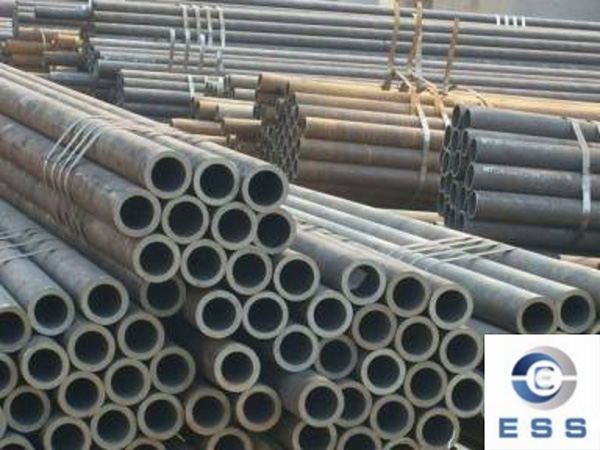How to quench the
seamless steel pipe after deformation and cracking?
The choice of quenching method is mainly to obtain martensite and reduce internal stress, workpiece deformation and cracking. Commonly used quenching methods include single-medium quenching, double-medium quenching, graded quenching, and isothermal quenching.
Austempering is one of the effective quenching methods to reduce the deformation and cracking of seamless steel pipes (SMLS) and seamed steel pipes (straight seam steel pipes, spiral steel pipes and
ERW pipes), but how to use this process correctly should be based on the steel pipe material, size, Reasonable selection of hardness and toughness, deformation requirements and specific working conditions. The problems that need to be paid attention to during austempering are summarized as follows, for the reference of heat treatment operators.

1. For isothermal tempering of steels with low hardenability such as carbon seamless steel pipes, the quenching heating temperature should be increased appropriately, the purpose is to increase the stability of austenite, and avoid and prevent the process of isothermal high-temperature unshelled steel. body modification.
2. Austempering is limited by steel type and steel size. The basic principle of austempering is to ensure that the seamless steel pipe does not undergo high-temperature transformation during the cooling process. Therefore, the steel type and size of the seamless steel pipe directly affect the quality of austempering. It is generally required that the effective thickness of carbon steel seamless steel pipe is not more than 5mm, and the effective thickness of alloy steel is less than 30mm. From the perspective of carbon content, carbon steel with 0.4% to 0.6% is not suitable for austempering, and carbon steel with more than 0.6% can be austempered.
3. The temperature and time of austempering should be determined according to the performance requirements of the steel pipe and with reference to the C curve of the steel grade. The principle is that all austenite is transformed into lower bainite. For the cooling medium, a nitrate bath solution is usually used. In order to ensure the stability of the temperature, a cooling device should be installed in the medium to prevent the temperature of the medium from rising and affecting the quenching quality. In addition, the length of the isothermal time should be based on the completion of the structural transformation of the seamless steel pipe. Excessive time will reduce work efficiency and should be paid attention to.
4. Some seamless steel pipes that have been treated by isothermal tempering cannot be tempered again. However, for partially bainitic quenched workpieces, the internal retained austenite will transform into martensite during subsequent air cooling, so tempering is necessary to eliminate brittleness and stabilize dimensions. It should be noted that the tempering temperature should be lower than the isothermal temperature.













 Eastern Steel Manufacturing Co.,Ltd not only improve product production and sales services, but also provide additional value-added services. As long as you need, we can complete your specific needs together.
Eastern Steel Manufacturing Co.,Ltd not only improve product production and sales services, but also provide additional value-added services. As long as you need, we can complete your specific needs together.










